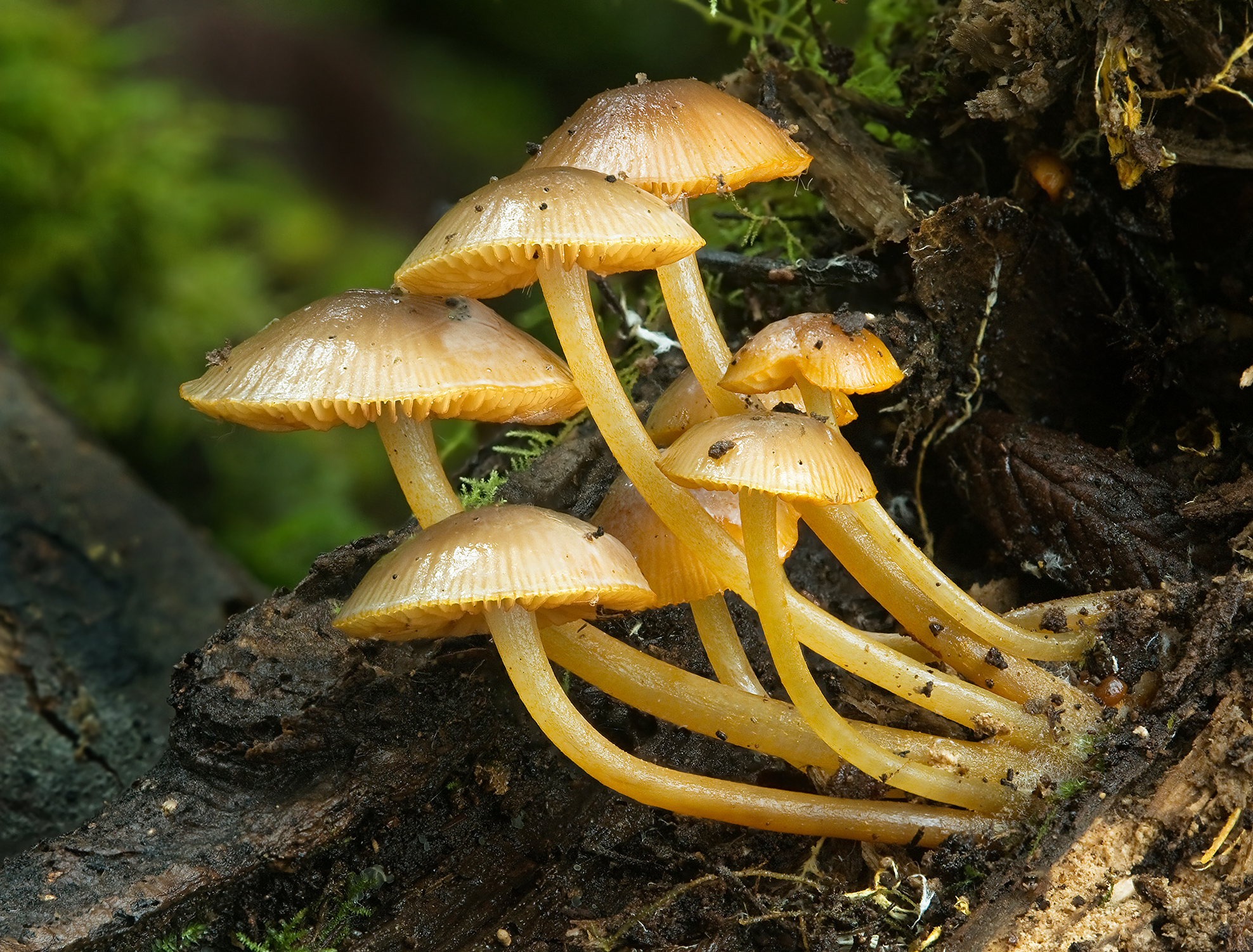|
Amadou
Amadou is a spongy material derived from ''Fomes fomentarius'' and similar fungi that grow on the bark of coniferous and angiosperm trees, and have the appearance of a horse's hoof (thus the name "hoof fungus"). It is also known as the "tinder fungus" and is useful for starting slow-burning fires. The fungus must be removed from the tree, the hard outer layer scraped off, and then thin strips of the inner spongy layer cut for use as tinder. Amadou was a precious resource to ancient people, allowing them to start a fire by catching sparks from flint struck against iron pyrites. Bits of fungus preserved in peat have been discovered at the Mesolithic site of Star Carr in the UK, modified presumably for this purpose. Remarkable evidence for its utility is provided by the discovery of the 5,000-year-old remains of "Ötzi the Iceman", who carried it on a cross-alpine excursion before his death and subsequent ice-entombment. Amadou has great water-absorbing abilities. It is used in fl ... [...More Info...] [...Related Items...] OR: [Wikipedia] [Google] [Baidu] |
Fomes Fomentarius
''Fomes fomentarius'' (commonly known as the tinder fungus, false tinder fungus, hoof fungus, tinder conk, tinder polypore or ice man fungus) is a species of fungi, fungal plant pathogen found in Europe, Asia, Africa and North America. The species produces very large polypore Basidiocarp, fruit bodies which are shaped like a horse hoof, horse's hoof and vary in colour from a silvery grey to almost black, though they are normally brown. It grows on the side of various species of tree, which it infects through broken bark, causing wood-decay fungus, rot. The species typically continues to live on trees long after they have died, changing from a parasite to a decomposer. Though inedible, ''F. fomentarius'' has traditionally seen use as the main ingredient of amadou, a material used primarily as tinder, but also used to make clothing and other items. The 5,000-year-old Ötzi the Iceman carried four pieces of ''F. fomentarius'', concluded to be for use as tinder. It also ha ... [...More Info...] [...Related Items...] OR: [Wikipedia] [Google] [Baidu] |
Tinder
Tinder is easily Combustibility and flammability, combustible material used to Firemaking, start a fire. Tinder is a finely divided, open material which will begin to glow under a shower of sparks. Air is gently wafted over the glowing tinder until it bursts into flame. The flaming tinder is used to ignite wikt:kindling, kindling, which in turn is used to ignite the bulk material, to produce a fire. Tinder can be made of any flammable substance, as long as it is finely divided and has an open structure. Technique Any flammable material may be used as long as it is finely divided. As the tinder gets thinner, the surface area and edges increase, making it ignite more easily. Wood tinder can be made by carefully shaving thin slivers off a larger piece. Another method which keeps these slivers together, is to make a feather stick. The driest wood, which makes the best tinder, is that of dead branches that have not yet fallen to the ground. If a fire is to be lit by sparks rather ... [...More Info...] [...Related Items...] OR: [Wikipedia] [Google] [Baidu] |
Fly Fishing
Fly fishing is an angling technique that uses an ultra-lightweight lure called an artificial fly, which typically mimics small invertebrates such as flying and aquatic insects to attract and catch fish. Because the mass of the fly lure is insufficient to overcome air resistance, it cannot be launched far using conventional gears and techniques, so specialized tackles are used instead and the casting techniques are significantly different from other forms of angling. It is also very common for the angler to wear waders, carry a hand net, and stand in the water when fishing. Fly fishing primarily targets predatory fish that have significant amount of very small-sized prey in their diet, and can be done in fresh or saltwater. North Americans usually distinguish freshwater fishing between cold-water species (trout, salmon) and warm-water species (notably black bass). In Britain, where natural water temperatures vary less, the distinction is between game fishing for trout ... [...More Info...] [...Related Items...] OR: [Wikipedia] [Google] [Baidu] |
Mycologist
Mycology is the branch of biology concerned with the study of fungi, including their taxonomy, genetics, biochemical properties, and use by humans. Fungi can be a source of tinder, food, traditional medicine, as well as entheogens, poison, and infection. Yeasts are among the most heavily utilized members of the fungus kingdom, particularly in food manufacturing. Mycology branches into the field of phytopathology, the study of plant diseases. The two disciplines are closely related, because the vast majority of plant pathogens are fungi. A biologist specializing in mycology is called a mycologist. Overview The word ''mycology'' comes from the Ancient Greek: μύκης (''mukēs''), meaning "fungus" and the suffix (''-logia''), meaning "study." Pioneer mycologists included Elias Magnus Fries, Christiaan Hendrik Persoon, Heinrich Anton de Bary, Elizabeth Eaton Morse, and Lewis David de Schweinitz. Beatrix Potter, author of '' The Tale of Peter Rabbit'', also made signific ... [...More Info...] [...Related Items...] OR: [Wikipedia] [Google] [Baidu] |
Fire Making
Fire making, fire lighting or fire craft is the process of artificially starting a fire. It requires completing the fire triangle, usually by heating tinder above its autoignition temperature. Fire is an essential tool for human survival and the use of fire was important in early human cultural history since the Lower Paleolithic. Today, it is a key component of Scouting, woodcraft and bushcraft. Archaeology Evidence for fire making dates to at least the early Middle Paleolithic, with dozens of Neanderthal hand axes from France exhibiting use-wear traces suggesting these tools were struck with the mineral pyrite to produce sparks around 50,000 years ago. At the Neolithic site of La Draga, researchers have found that fungi were used as tinder. Hearths are one of the most common features found at archaeological sites. Ötzi, a well-preserved natural mummy of a man who lived in the Ötztal Alps between 3400 and 3100 BCE, carried material to make a fire ( tinder fungus ... [...More Info...] [...Related Items...] OR: [Wikipedia] [Google] [Baidu] |
Fungal Morphology And Anatomy
A fungus (: fungi , , , or ; or funguses) is any member of the group of eukaryotic organisms that includes microorganisms such as yeasts and mold (fungus), molds, as well as the more familiar mushrooms. These organisms are classified as one of the kingdom (biology)#Six kingdoms (1998), traditional eukaryotic kingdoms, along with Animalia, Plantae, and either Protista or Protozoa and Chromista. A characteristic that places fungi in a different kingdom from plants, bacteria, and some protists is chitin in their cell walls. Fungi, like animals, are heterotrophs; they acquire their food by absorbing dissolved molecules, typically by secreting digestive enzymes into their environment. Fungi do not photosynthesize. Growth is their means of motility, mobility, except for spores (a few of which are flagellated), which may travel through the air or water. Fungi are the principal decomposers in ecological systems. These and other differences place fungi in a single group of related o ... [...More Info...] [...Related Items...] OR: [Wikipedia] [Google] [Baidu] |
Washing Soda
Sodium carbonate (also known as washing soda, soda ash, sal soda, and soda crystals) is the inorganic compound with the formula and its various hydrates. All forms are white, odourless, water-soluble salts that yield alkaline solutions in water. Historically, it was extracted from the ashes of plants grown in sodium-rich soils, and because the ashes of these sodium-rich plants were noticeably different from ashes of wood (once used to produce potash), sodium carbonate became known as "soda ash". It is produced in large quantities from sodium chloride and limestone by the Solvay process, as well as by carbonating sodium hydroxide which is made using the chloralkali process. Hydrates Sodium carbonate is obtained as three hydrates and as the anhydrous salt: * sodium carbonate decahydrate ( natron), Na2CO3·10H2O, which readily effloresces to form the monohydrate. * sodium carbonate heptahydrate (not known in mineral form), Na2CO3·7H2O. * sodium carbonate monohydrate ( thermonatri ... [...More Info...] [...Related Items...] OR: [Wikipedia] [Google] [Baidu] |
Potassium Nitrate
Potassium nitrate is a chemical compound with a sharp, salty, bitter taste and the chemical formula . It is a potassium salt of nitric acid. This salt consists of potassium cations and nitrate anions , and is therefore an alkali metal nitrate. It occurs in nature as a mineral, niter (or ''nitre'' outside the United States). It is a source of nitrogen, and nitrogen was named after niter. Potassium nitrate is one of several nitrogen-containing compounds collectively referred to as saltpetre (or saltpeter in the United States). Major uses of potassium nitrate are in fertilizers, tree stump removal, rocket propellants and fireworks. It is one of the major constituents of traditional gunpowder (black powder). In processed meats, potassium nitrate reacts with hemoglobin and myoglobin generating a red color. Etymology Nitre, or potassium nitrate, because of its early and global use and production, has many names. As for nitrate, Egyptian and Hebrew words for it had the ... [...More Info...] [...Related Items...] OR: [Wikipedia] [Google] [Baidu] |
Paul Stamets
Paul Edward Stamets (born July 17, 1955) is an American mycologist and entrepreneur who sells various mushroom products through his company. He is an author and advocate of medicinal fungi and mycoremediation. Early and personal life Stamets was born in Salem, Ohio. He grew up in Columbiana, Ohio, with older and younger siblings. He graduated from The Evergreen State College in Olympia, Washington, with a bachelor's degree in 1979. He worked as a logger. As of 2013, Stamets was married to Carolyn "Dusty" Yao. He has an honorary doctorate from the National University of Natural Medicine in Portland. Mycological interest Stamets credits his late brother, John, with stimulating his interest in mycology, and studied mycology as an undergraduate student. Having no academic training higher than a bachelor's degree A bachelor's degree (from Medieval Latin ''baccalaureus'') or baccalaureate (from Modern Latin ''baccalaureatus'') is an undergraduate degree awarded by coll ... [...More Info...] [...Related Items...] OR: [Wikipedia] [Google] [Baidu] |
Felt
Felt is a textile that is produced by matting, condensing, and pressing fibers together. Felt can be made of natural fibers such as wool or animal fur, or from synthetic fibers such as petroleum-based acrylic fiber, acrylic or acrylonitrile or wood pulp–based rayon. Blended fibers are also common. Natural fiber felt has special properties that allow it to be used for a wide variety of purposes. It is "fire-retardant and self-extinguishing; it dampens vibration and absorbs sound; and it can hold large amounts of fluid without feeling wet..." History Felt from wool is one of the oldest known textiles. Many cultures have legends about the origins of felt-making. Sumerian legend claims that the secret of feltmaking was discovered by Urnamman of Lagash. The story of Clement of Metz, Saint Clement and Saint Christopher relates that the men packed their sandals with wool to prevent blisters while fleeing from persecution. At the end of their journey the movement and sweat had turned ... [...More Info...] [...Related Items...] OR: [Wikipedia] [Google] [Baidu] |







